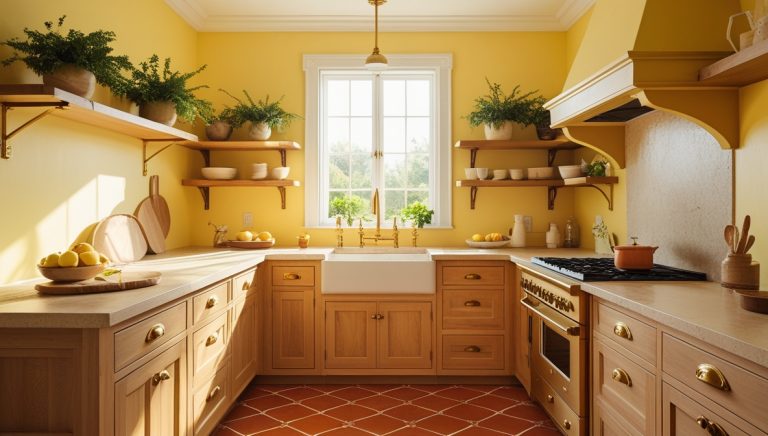Why Natural Materials Are Better for Home Interiors
When designing or decorating a home, the choice of materials plays a critical role in shaping not only its aesthetic appeal but also its overall comfort and sustainability. In recent years, there has been a significant shift toward using natural materials in interiors, with designers and homeowners recognizing their timeless beauty and functional benefits. Natural materials such as wood, stone, clay, cotton, wool, and bamboo have been used for centuries and continue to prove their relevance in modern design. But what makes them superior to synthetic alternatives? To answer this, it is essential to explore the history, science, benefits, and long-term implications of incorporating natural elements into living spaces.
A Historical Perspective on Natural Materials in Homes
Natural materials have been integral to home construction and decoration since the earliest civilizations. Ancient Greeks used marble and stone in their architecture, while traditional Japanese homes were constructed from bamboo, paper screens, and wood, emphasizing harmony with nature. European castles, cottages, and farmhouses relied heavily on stone, timber, and clay, demonstrating their durability and availability. The use of natural materials was not just about practicality—it was tied to culture, craftsmanship, and a deeper respect for the environment. In contrast, the widespread adoption of synthetic materials only gained momentum during the Industrial Revolution, when affordability and mass production were prioritized over authenticity. The resurgence of natural materials in today’s interiors can be seen as a return to traditional wisdom, with added scientific understanding of their benefits.
The Science Behind Natural Materials
One of the key scientific advantages of natural materials lies in their ability to regulate indoor environments. Materials such as clay, brick, and stone have excellent thermal mass, meaning they can absorb, store, and release heat, naturally balancing indoor temperatures. Wood and natural textiles are also hygroscopic, which means they absorb and release moisture, improving indoor humidity levels. This not only enhances comfort but also contributes to healthier living conditions. Research has shown that synthetic materials often emit volatile organic compounds (VOCs), which can negatively affect indoor air quality. Natural materials, especially untreated or minimally processed ones, significantly reduce this risk, making homes safer for occupants.
Health Benefits of Natural Materials
A growing body of evidence highlights the positive impact of natural materials on physical and mental well-being. For instance, studies have shown that natural wood can lower stress, improve mood, and even reduce blood pressure, creating a calming indoor environment. Similarly, wool and cotton fabrics are hypoallergenic and breathable, making them ideal for individuals with sensitivities or allergies. Stone surfaces are easy to clean and resistant to bacteria, contributing to healthier kitchens and bathrooms. By choosing natural materials, homeowners create spaces that support both wellness and peace of mind.
Environmental Advantages and Sustainability
Sustainability is one of the strongest arguments for using natural materials in home interiors. Unlike synthetic alternatives that often require energy-intensive manufacturing processes, natural materials are generally renewable, biodegradable, and less harmful to the environment. Bamboo, for example, grows rapidly and regenerates without replanting, making it one of the most sustainable building resources. Wood from responsibly managed forests can be replenished, while stone and clay are abundant and long-lasting. Using natural materials also supports a circular economy, where products can be reused, repurposed, or decomposed without leaving a lasting environmental footprint. This makes natural interiors not only beautiful but also ecologically responsible.
Timeless Aesthetic Appeal
One of the reasons natural materials continue to dominate interior design is their timeless and versatile aesthetic. Wood brings warmth and character, with grains and textures that are impossible to replicate with laminates. Stone adds elegance and a sense of permanence, while clay and terracotta contribute rustic charm. Textiles such as linen, cotton, and wool create softness and coziness in interiors. Unlike synthetic materials, which can quickly look outdated, natural elements tend to age gracefully, developing patinas and character over time. This timeless quality ensures that homes designed with natural materials retain their appeal across generations.
Practical Applications in Modern Homes
Natural materials can be seamlessly integrated into almost every aspect of a home. Hardwood flooring is a popular choice for its durability and warmth, while stone countertops remain a top preference in kitchens and bathrooms for their resilience. Clay tiles are widely used in warm climates for their cooling effect, and wool or cotton rugs add comfort and style to living spaces. Bamboo is increasingly being used not only for flooring but also for furniture and cabinetry, reflecting its versatility. Textiles such as linen curtains or organic cotton bedding contribute to healthier sleeping environments. Beyond their practical uses, these materials help create cohesive interiors that feel grounded and connected to nature.
Expert Insights on Biophilic Design
Design experts frequently emphasize the importance of biophilic design, an approach that integrates natural elements into living environments to improve human well-being. According to the concept, humans have an innate connection with nature, and surrounding ourselves with natural materials, textures, and patterns enhances our mental and emotional health. Incorporating wood paneling, stone accent walls, or even clay plaster surfaces supports this principle. Experts suggest that homes designed with natural materials reduce stress, promote creativity, and foster a sense of balance. For more on biophilic design, you can explore insights from the International Living Future Institute and their research on sustainable architecture.
The Role of Technology in Supporting Natural Materials
While natural materials have a long history, modern technology has enhanced their usability and accessibility. Advanced treatments make wood more resistant to fire, moisture, and pests without compromising its eco-friendly qualities. Similarly, natural stone can now be cut, polished, and sealed more efficiently, making it easier to incorporate into various designs. Composite materials that blend natural fibers with innovative processes offer durability while preserving ecological benefits. Technology has therefore allowed natural materials to compete with synthetics on a practical level, while still retaining their environmental and aesthetic advantages.
Challenges and Considerations
While the advantages of natural materials are compelling, it is important to acknowledge some of the challenges. High-quality wood, stone, or wool can be more expensive upfront compared to synthetic alternatives. Some materials also require regular maintenance to preserve their beauty and durability. For example, untreated wood may need periodic sealing, while natural textiles might require delicate care. Additionally, sourcing natural materials responsibly is crucial, as irresponsible practices like deforestation can undermine their environmental benefits. This makes it important for homeowners and designers to choose certified and ethically sourced options whenever possible.
Conclusion
Natural materials hold a unique place in home interiors, offering a blend of health benefits, sustainability, and timeless beauty that synthetic alternatives cannot match. From their historical roots to their modern-day applications, they bring authenticity and warmth to living spaces. Scientifically, they improve air quality, regulate temperature and humidity, and contribute to overall wellness. Aesthetically, they age gracefully and complement diverse design styles. Environmentally, they support a more sustainable future when sourced responsibly. Despite the challenges of cost and maintenance, their long-term value far outweighs these drawbacks. Choosing natural materials is not simply a design trend—it is an investment in healthier living, ecological responsibility, and enduring style.
Further Reading & References






